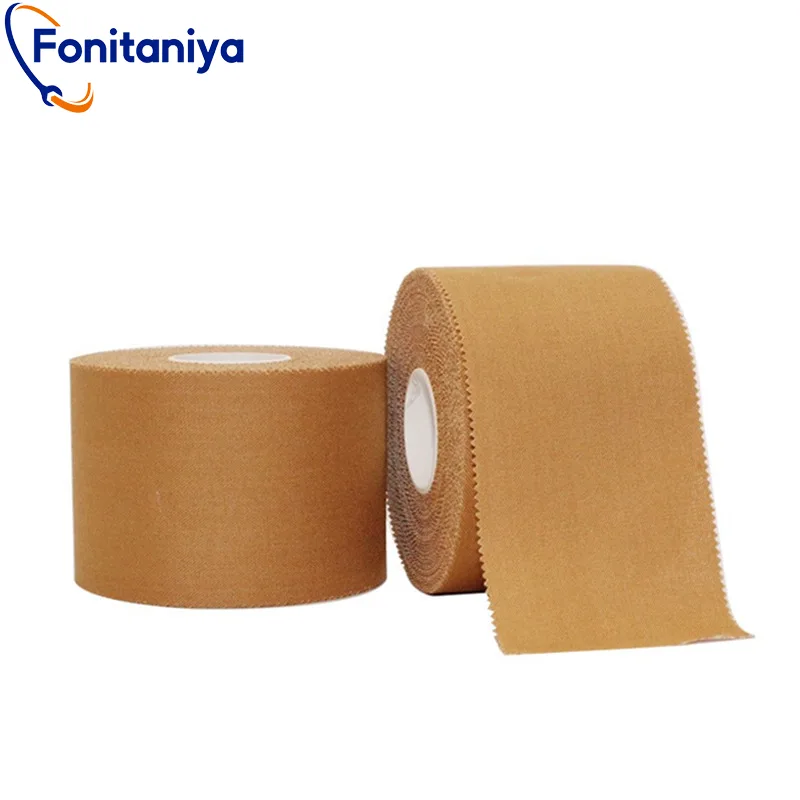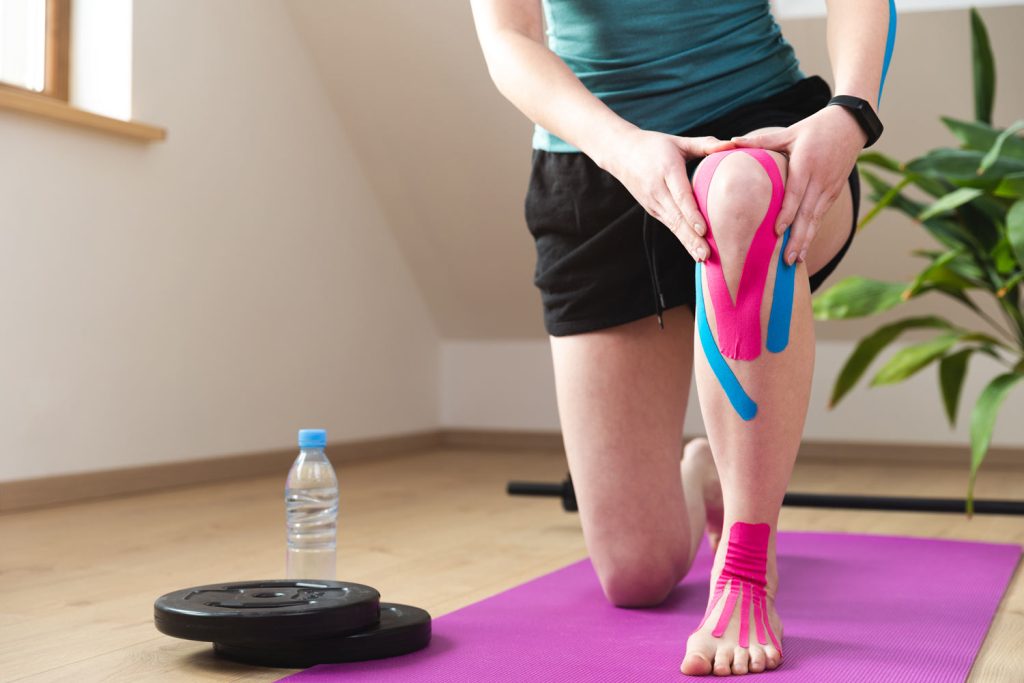Did you know that the right type of tape can significantly enhance your recovery from an injury, whether you’re a weekend warrior or a professional athlete? Understanding the specifics of adhesive tapes is crucial, especially when it comes to zinc oxide tape, which has been making waves in both medical and athletic communities. In this article, we’ll clarify what zinc oxide tape is, how it compares to other popular types like micropore tape, kinesiology tape, and athletic tape. By the end, you’ll know whether zinc oxide tape is best for your needs as a bandage or sports tape.
What is Zinc Oxide Tape?
Zinc oxide tape is a robust adhesive tape extensively used in various medical and athletic applications. Made from a cotton or rayon backing with a zinc oxide adhesive coating, this tape is known for its strong adhesion, flexibility, and durability. Zinc oxide tape serves primarily two functions: providing support and protection, making it vital for both wound treatment and sports medicine.
As a bandage, zinc oxide tape offers excellent protection over wounds and injuries while promoting healing. The anti-inflammatory properties of zinc oxide itself can also aid in recovery, reducing pain and swelling. According to a survey published in the Journal of Athletic Training, approximately 78% of athletic trainers recommend zinc oxide sports tape for supporting joints and preventing injuries due to its proven effectiveness.

Zinc Tape vs. Elastic Bandages
While both zinc oxide tape and elastic bandages serve to support injured areas, they do so through different mechanics and benefits.
Adhesive Strength and Support
Zinc oxide tape is renowned for its rigid support capabilities. Once applied, it holds steadfast, providing firm support that helps stabilize joints and prevent further strain or injury. Elastic bandages, however, are flexible and stretchy, allowing for more movement but offering less support. They are often used for compression and can adapt to different shapes, which allows for better comfort but at the cost of stability.
Application and Pain Considerations
Zinc oxide tape tends to be more challenging to remove due to its strong adhesive properties. This quality is beneficial for extended wear but might cause discomfort when it’s time to take it off. In contrast, elastic bandages can be wrapped and unwrapped quickly and with little pain, making them ideal for more casual use or for individuals who frequently need to change their bandage.
Practical Applications
For athletes looking for stability, zinc oxide tape is often the first choice. Conversely, elastic bandages are more commonly used in non-competitive scenarios, such as day-to-day injuries.
Zinc Oxide Tape vs. Micropore Tape
Micropore tape, sometimes referred to as surgical tape, is a soft, hypoallergenic adhesive tape that holds dressings securely in place, especially for sensitive skin. Let’s dive deeper into how zinc oxide tape compares to micropore tape.
Ideal Usage Scenarios
Micropore tape is particularly beneficial for pediatric applications and those with sensitive skin. The hypoallergenic nature ensures that it does not irritate the skin, making it suitable for extended wear. It is ideal for securing dressings in medical settings and can easily be torn by hand.
In contrast, zinc oxide tape shines when it comes to immobilizing joints or areas of the body that require more stability. According to a study published in the Journal of Wound Care, zinc oxide tape has been shown to reduce mobility in injured areas by 30% more effectively than micropore tape.
Removal and Residue
Micropore tape has the advantage of being easier to remove with minimal pain and leaves no adhesive residue on the skin. This quality is crucial for patients undergoing regular dressing changes. On the other hand, zinc oxide tape may leave residue, making it slightly more troublesome when it needs to be taken off.
Skin Compatibility
Both tapes are breathable, which helps avoid moisture build-up. However, micropore tape is specifically designed to be permeable to air and moisture, reducing the risk of skin maceration. Zinc oxide tape is less permeable but offers other benefits, especially when strong support and compression are needed.
Zinc Oxide Tape vs. Kinesiology Tape
Kinesiology tape has gained popularity in sports and rehabilitation due to its unique properties. Let’s see how it stacks up against zinc oxide tape.
Movement and Flexibility
Kinesiology tape is designed to mimic the skin’s elasticity, allowing for a full range of motion while still providing support. Athletes often prefer kinesiology tape for its ability to support movements without restricting them. Meanwhile, zinc oxide tape is non-elastic and is better suited for scenarios where immobilization is more critical.
Adhesion Longevity and Care
Kinesiology tape is often waterproof and more hygienic, allowing it to stay in place for up to seven days. Its medical-grade adhesive is suitable for prolonged use without risk of irritation. Zinc oxide tape should typically be changed every couple of days, especially if the area becomes wet or if the adhesive starts to weaken.
Unique Properties
One distinct property of kinesiology tape is its gentle lifting effect on the skin, which creates a microscopic space between the skin and underlying tissues. This can promote blood flow and lymphatic drainage, aiding recovery. Zinc oxide tape does not provide this effect and instead focuses on stabilizing the area it covers.
Related article: Zinc oxide tape 101.
Zinc Oxide Tape vs. Athletic Tape
Athletic tape is designed for quick and easy application in sports settings, making it a popular choice among athletes. Let’s explore how it compares with zinc oxide tape.
Quick Application Features
Unlike zinc oxide tape, which requires careful application, athletic tape generally comes with a serrated edge for easy hand tearing. This feature allows athletes to quickly address injuries on the field, an essential factor during fast-paced sports.
Compression and Security
Zinc oxide tape is more versatile in its compressive strength, making it ideal for immobilization and support. Athletic tape provides rigidity but lacks the same level of adhesive strength as zinc oxide tape. Thus, for severe injuries requiring extra support, zinc oxide tape is typically recommended.
Comfort and Skin Interaction
Athletes have noted a preference for zinc oxide tape when it comes to longer wear times, as it provides a firmer hold during physical exertion. Athletic tape may be great for quick fixes but can sometimes cause irritation if used for extended periods without breaks. Experts advise keeping protective underwraps in place to minimize skin contact with any athletic tape, whereas zinc oxide tape offers a more direct way to support the skin during injury.
Conclusion
In conclusion, zinc oxide tape serves as both a bandage and a sports tape, making it a versatile choice for medical and athletic purposes. Its benefits extend from strong adhesive properties and immobilization to aiding in recovery. In contrast, other tapes like micropore, kinesiology, and athletic tapes serve specific needs that may be more appropriate in different contexts.
At Fonitaniy Adhesive Company, we’ve been a trusted adhesive solution provider for over 15 years, specializing in high-quality zinc oxide tape tailored for various applications. Whether you need a dependable bandage or sports tape, our products are engineered to meet your needs effectively.
FAQs
What is the main use of zinc oxide tape?
It is primarily used for joint support and as a protective bandage.
Is zinc oxide tape suitable for sensitive skin?
It may not be best for sensitive skin; micropore tape is recommended in such cases.
How long can zinc oxide tape stay on?
It’s best to keep it on for 1-3 days, depending on the activity level.
Can zinc oxide tape be used for sports injuries?
Absolutely, it’s commonly used to provide support for athletes.
How does zinc oxide tape compare to kinesiology tape?
Zinc oxide tape is non-elastic and is better for immobilization, whereas kinesiology tape supports flexibility.



